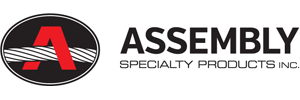Perception is reality… or is it?
Recently, Assembly Specialty hired a consultant to talk with a dozen of our customers, and even a few competitors, in order to learn what their perceptions are about our company. Although we received overwhelmingly positive feedback on the quality of our work, timeliness of our shipments, and our customer service team, we found that many people, even good customers, don’t know the full range of our capabilities. On one hand it’s a bit disappointing, that after 40 years some customers don’t really know us; on the other hand, it’s a great opportunity to improve our brand.
Perception is reality to the person conducting the observation; however, that doesn’t mean everybody is in agreement.
You Can Learn From Our Experience
Paraphrasing direct marketing expert, Jay Abraham: You don’t have the right to assume what people are thinking, you must test and verify so that your actions are based on facts not assumptions.
We assumed that our clients had a pretty good idea of who we are and what we offer. The fact we uncovered is that customers know what we do for them and associate it with quality products and services, but many have some misperceptions. Some of the confusion comes from how each company perceives itself as well.
Over years of being in business companies tend to take on new opportunities as a result of their past relationships and product history (organic growth). Some rigging shops begin manufacturing for OEM’s. Service organizations become sales reps and market the parts and equipment that they service. Cable assembly fabricators have become wire rope and hardware distributors. When an opportunity presents itself, so long as it is profitable, companies commonly undertake additional lines of work, in some cases changing the entire focus of the company. It’s a matter of adapting, surviving, and hopefully thriving. This is all fine and well so long as you don’t find yourself investing major effort into minor payoff areas of your business or creating a conflict with your existing customers.
Our founder, Erno Nagy, was an engineer for the old Upson Walton Co. in Cleveland, Ohio, where he designed fittings and wire rope assemblies. When Upson stopped investing in the company and started selling off divisions he saw a grim future and decided to be proactive. With a few partners he formed Assembly Specialty Products (ASPI), for the purpose of manufacturing and supplying wire rope assemblies. In order to do that he knew he was going to need fittings and made sure one of the partners had the capability to produce his fitting designs. From day one the vision was to be a manufacturer of all types of fabricated wire rope assemblies.
In short order companies wanted to know who made the quality fittings that ASPI was swaging-that led to inquiries and fitting orders. Rigging shops, hoist manufacturers, custom fabricators now were coming to ASPI just for fittings. More inquiries for specially fabricated wire rope assemblies and parts started coming in. These companies found that there are many shops that can do the machining, but almost none of them understand the art and science of swaging, and that is still true today some 40 years later. Soon companies wanted to order swaging dies-because ASPI’s assemblies, even those swaged on vertical presses, looked like they were done on a rotary swagger. Just the other day we received a set of dies from a new customer who just purchased them from a well-known manufacturer; he was immediately concerned because the new dies are pinching material and damaging his fittings.
Today Assembly Specialty has a dozen CNC automated lathes and machining centers as well as 18 swaging presses in a 45,000 sq. ft. state of the art facility. Needless to say ASPI has morphed into more than just a fabricator of wire rope assemblies. But, we haven’t changed our core principles and priorities.
- We are in the business of solving problems and creating opportunities for ourselves and other companies in the wire rope industry.
- We do not market to end users, strictly to rigging shops, OEM’s, distributors, and service companies. Every day we ship third party on behalf of our customers. They have no fear we are going to try to take the business.
- We are a manufacturer’s manufacturer. We design and manufacture for OEMs, and supply fittings and specialty assemblies to some of the biggest rigging shops in the country. Our products make it possible for them to capture business that they would otherwise pass up.
- In some cases we even supply OEM fittings to companies that compete with us, because we do it better than their other suppliers. We’re up front with them and would rather sell the fittings than lose the business if they can be more competitive on other aspects of the job.
Based on our research and our findings we are developing strategies to deliver a clearer message about our brand to both customers and prospects.
Some Action Steps Toward Clarifying Your Brand
As a part of establishing your brand and how you want to be perceived, you have to decide what you do not want to do and who you are not going to be as a company. Dick Zalack, business coach and consultant liked to ask business leaders the following:
- What business are you in? What is your current reality?
- What business should you be in? What are your strengths? What is it that you do better than anybody else?
- What business will you be in? You must define yourself and your company or others will do it for you.
To what activities will you say “NO” in order for you and your team to invest more of your – Time, Energy and Creativity into the highest payoff activities for you and your business?
“We are what we repeatedly do. Excellence then, is not an act, but a habit.” — Aristotle


Leave a Reply
Want to join the discussion?Feel free to contribute!